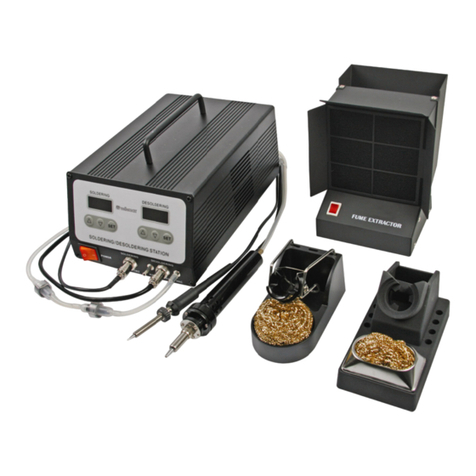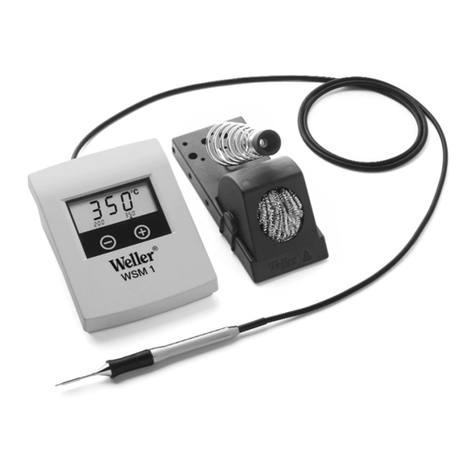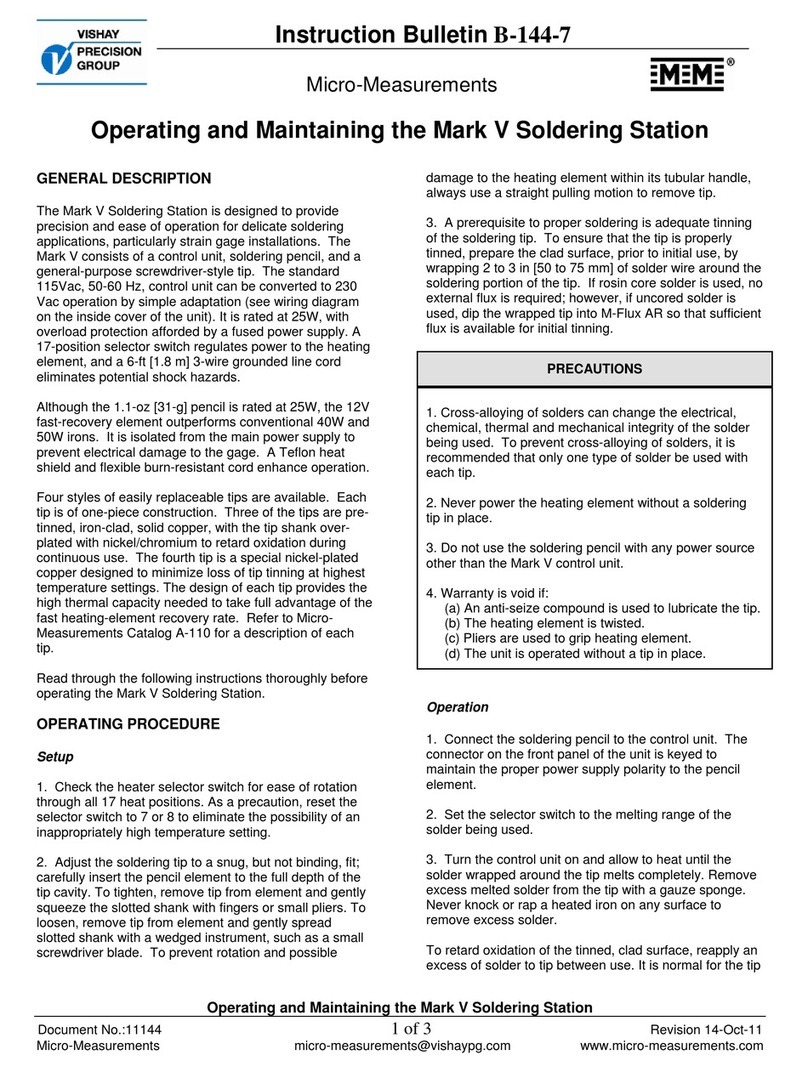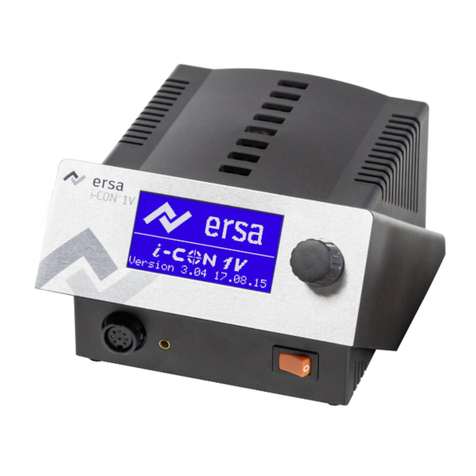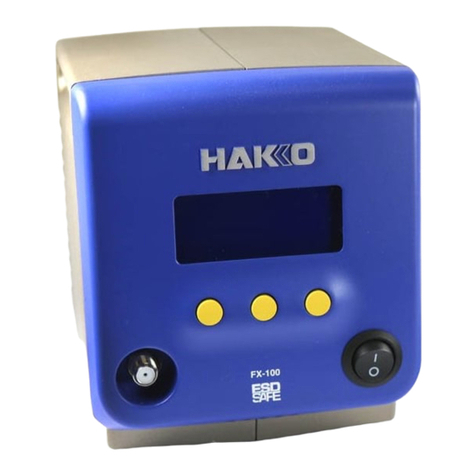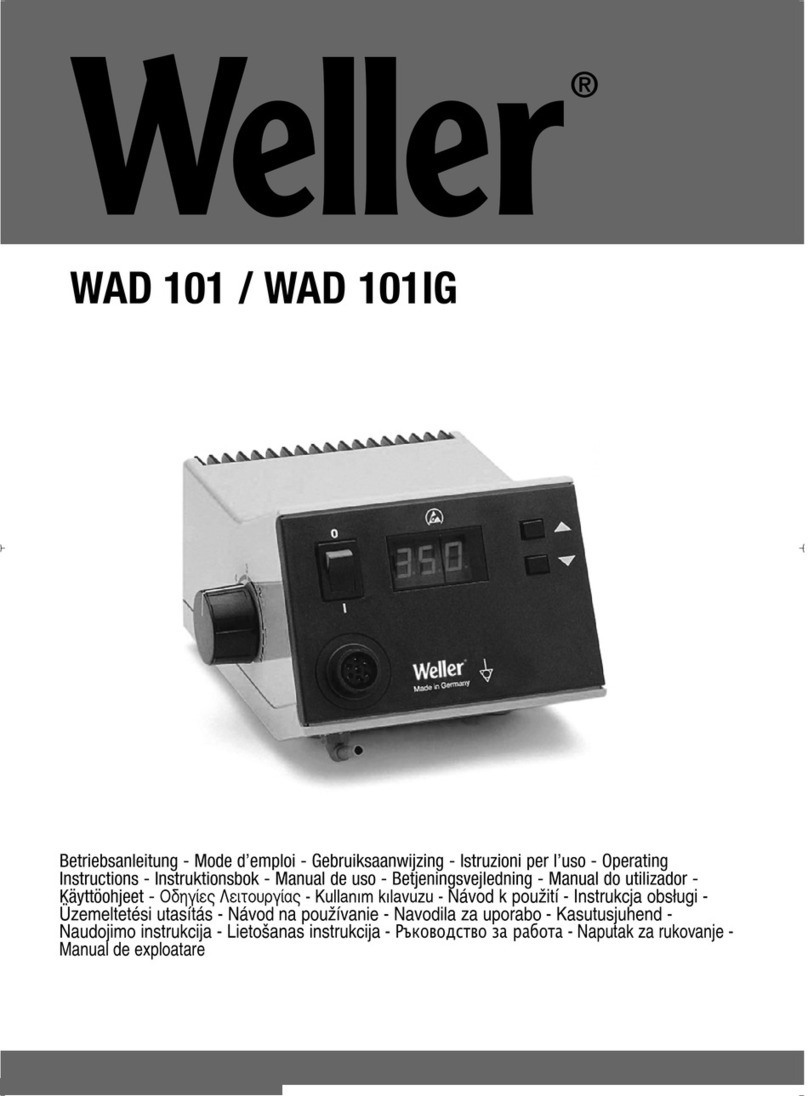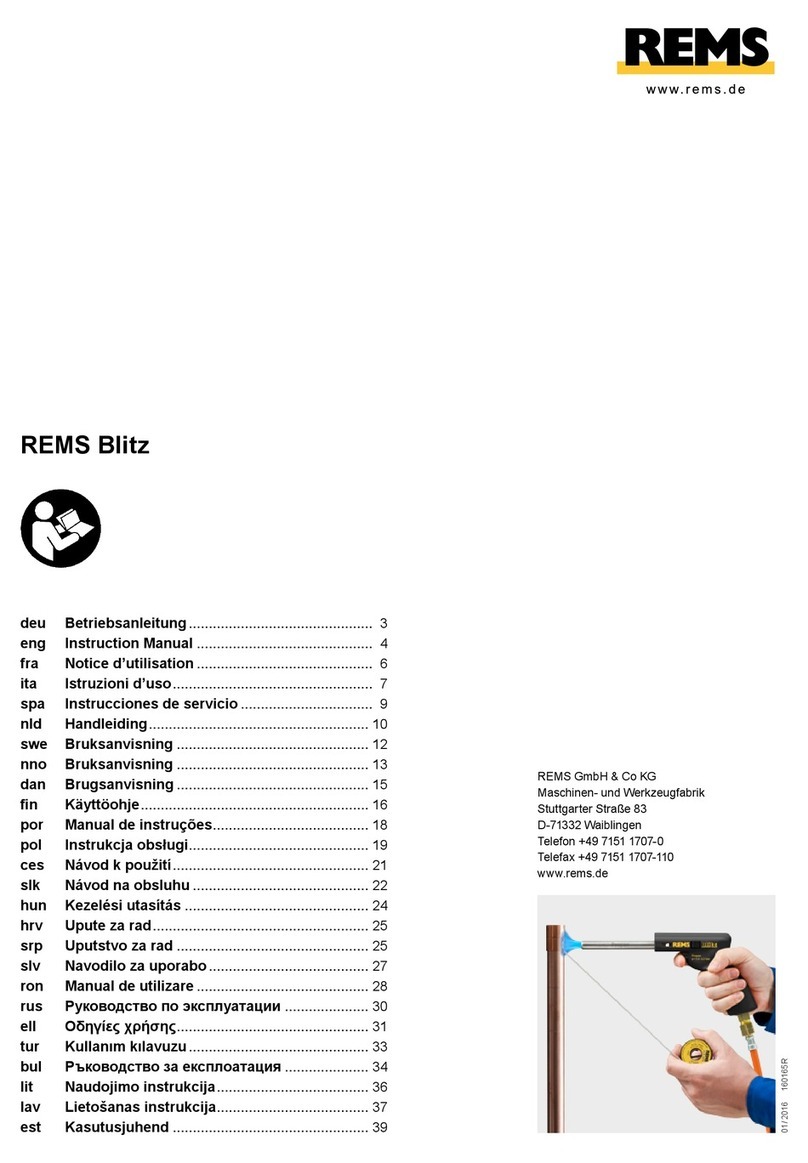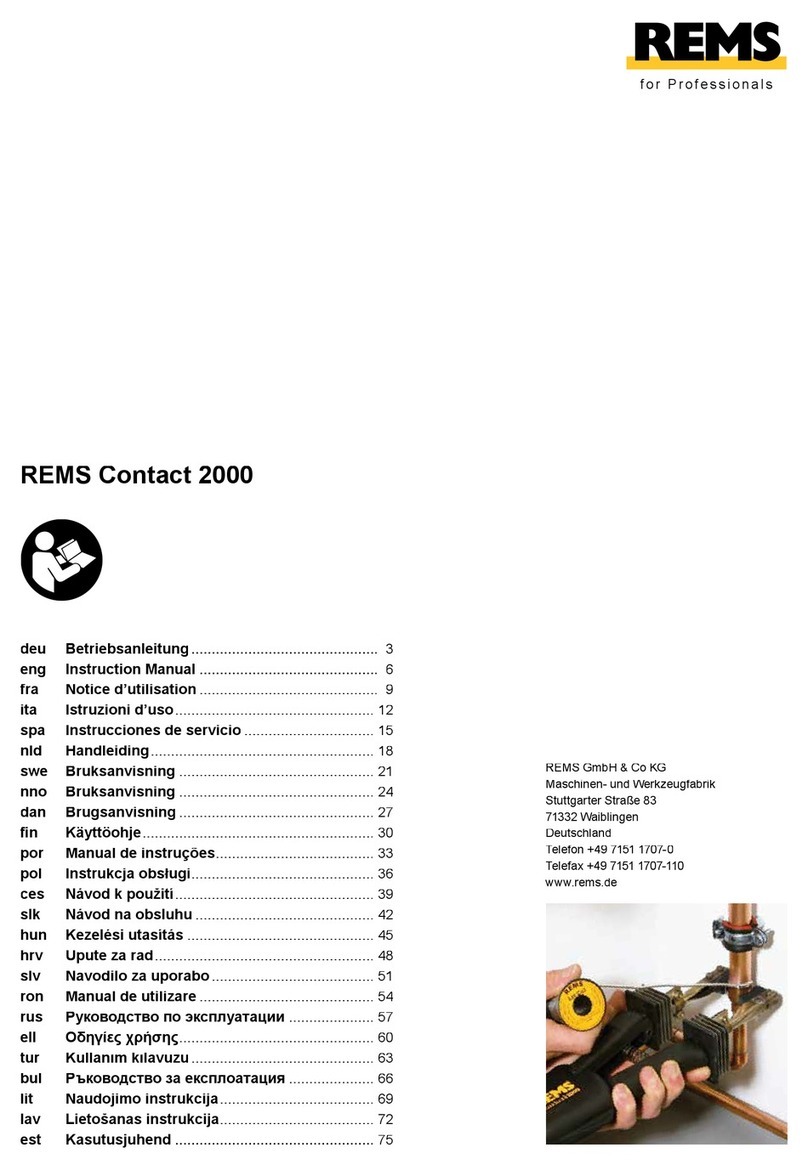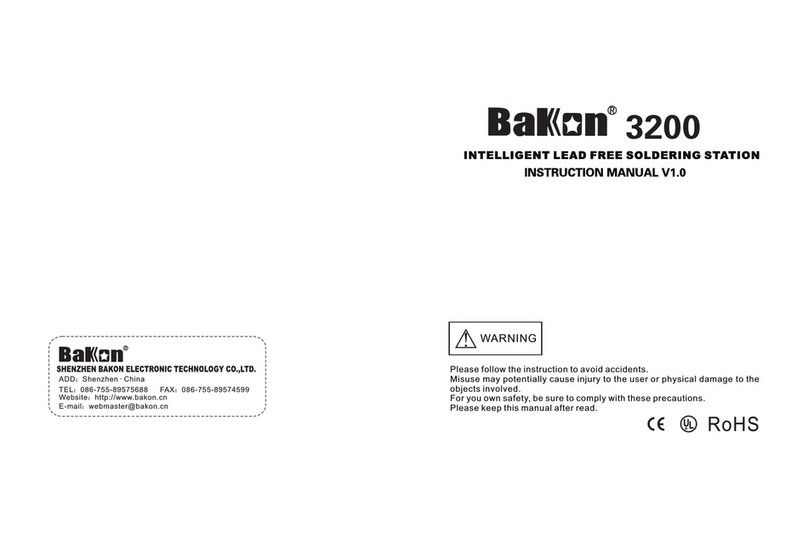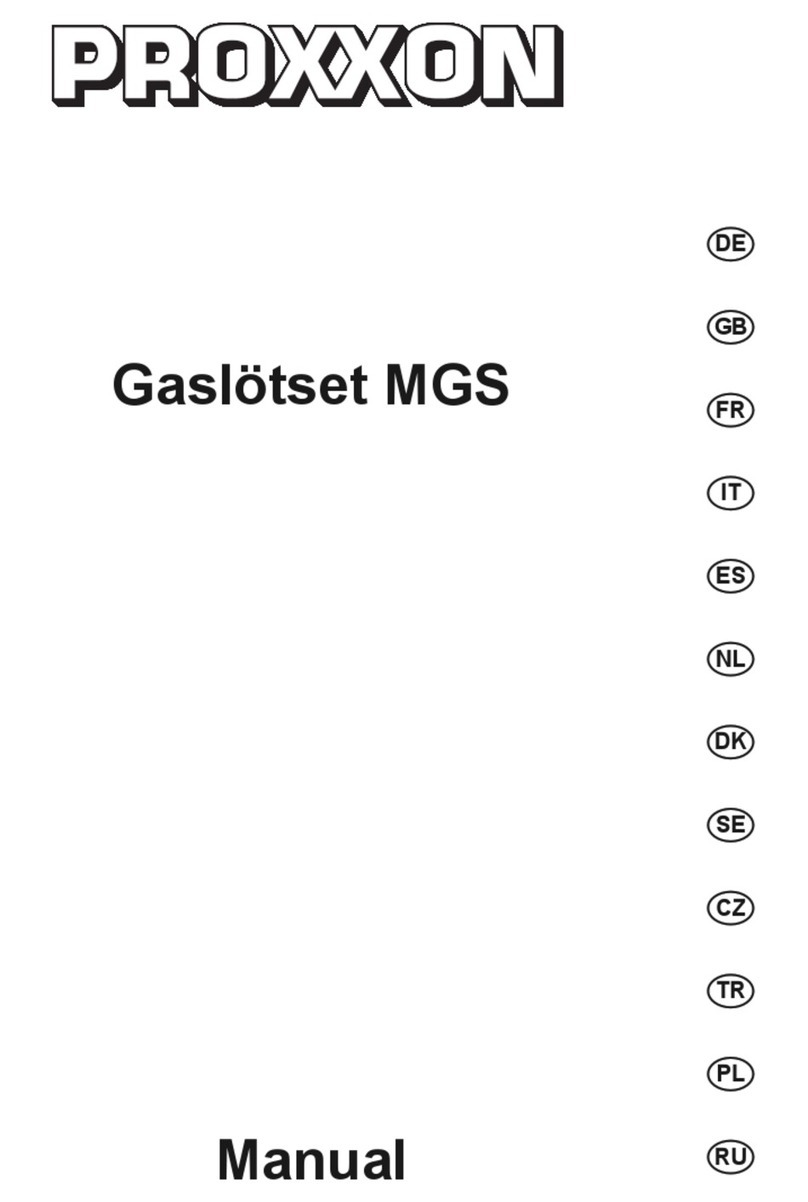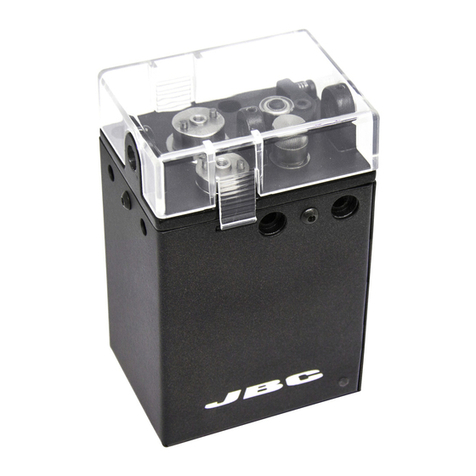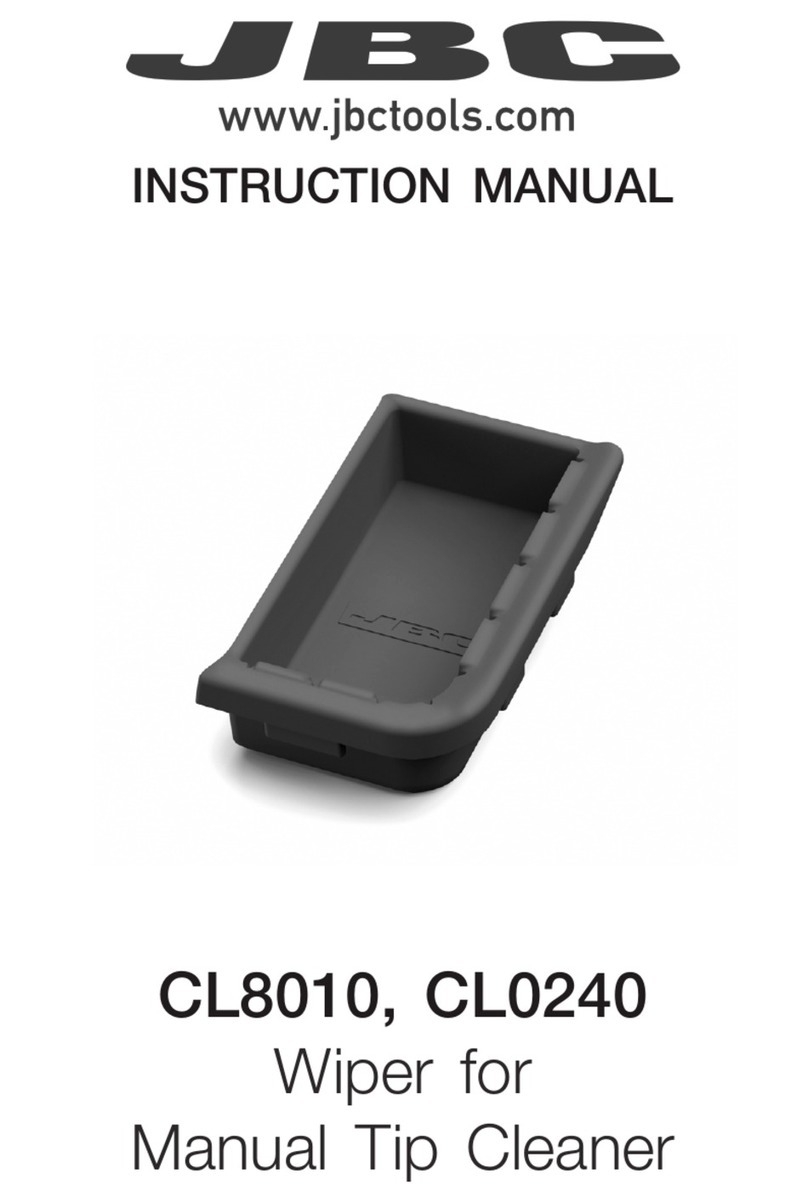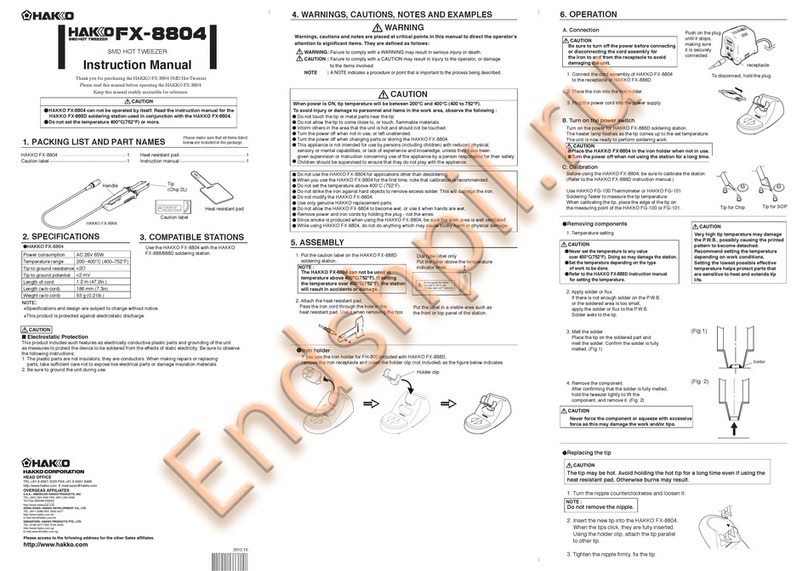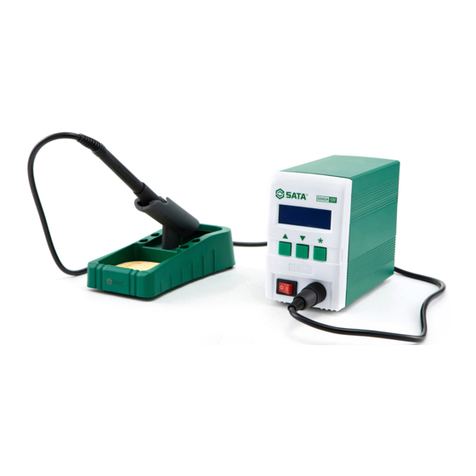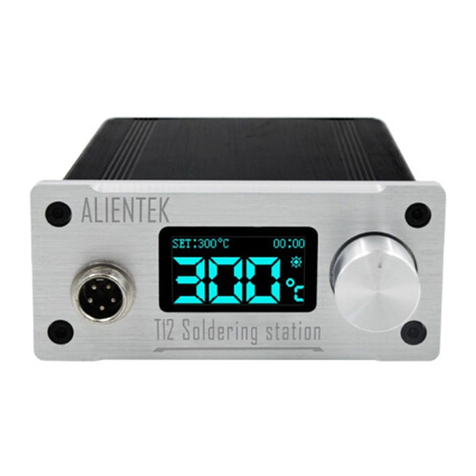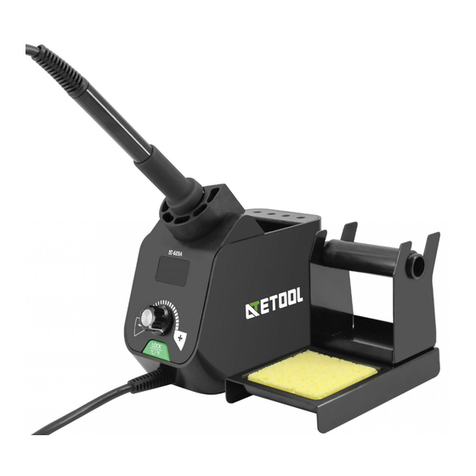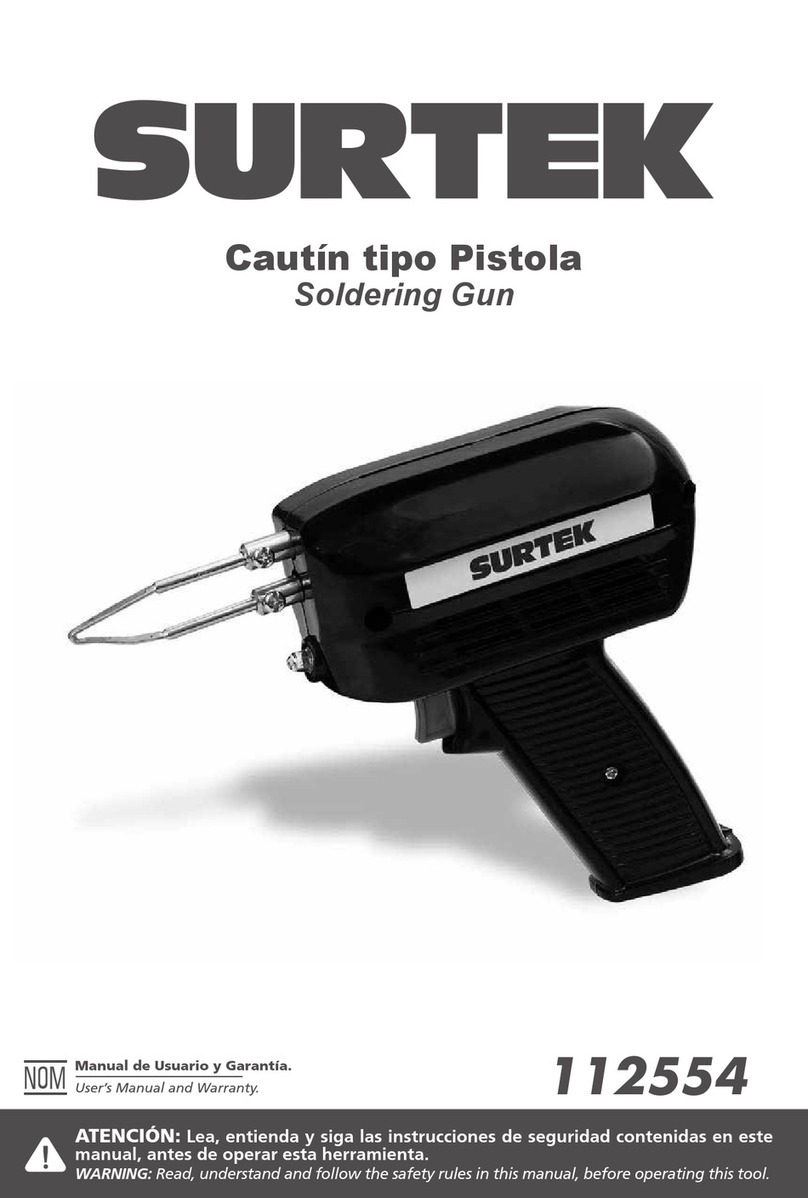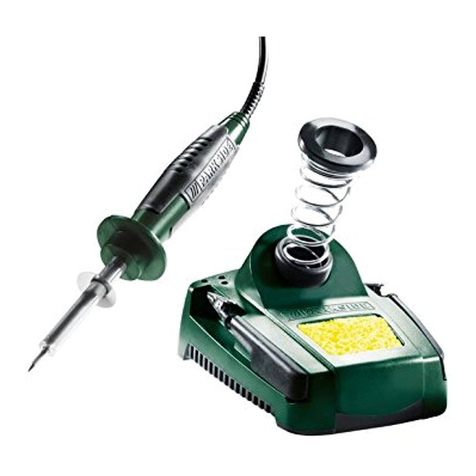
3
Translation of the Original Instruction Manual
6 Holder with prism electrode
General power tool safety warnings
WARNING
Read all safety warnings, instructions, illustrations and specifi cations provided
with this power tool. Failure to follow all instructions listed below may result in
electric shock, fi re and/or serious injury.
Save all warnings and instructions for future reference.
The term “power tool” in the warnings refers to your mains-operated (corded) power
tool or battery-operated (cordless) power tool.
1) Work area safety
a) Keep work area clean and well lit. Cluttered or dark areas invite accidents.
b) Do not operate power tools in explosive atmospheres, such as in the pres-
ence of fl ammable liquids, gases or dust. Power tools create sparks which
may ignite the dust or fumes.
c) Keep children and bystanders away while operating a power tool. Distrac-
tions can cause you to lose control.
2) Electrical safety
a) Power tool plugs must match the outlet. Never modify the plug in any way.
Do not use any adapter plugs with earthed (grounded) power tools. Unmodi-
fi ed plugs and matching outlets will reduce risk of electric shock.
b) Avoid body contact with earthed or grounded surfaces, such as pipes,
radiators, ranges and refrigerators. There is an increased risk of electric shock
if your body is earthed or grounded.
c) Do not expose power tools to rain or wet conditions. Water entering a power
tool will increase the risk of electric shock.
d) Do not abuse the cord. Never use the cord for carrying, pulling or unplug-
ging the power tool. Keep cord away from heat, oil, sharp edges or moving
parts. Damaged or entangled cords increase the risk of electric shock.
e)
When operating a power tool outdoors, use an extension cord suitable for
outdoor use. Use of a cord suitable for outdoor use reduces the risk of electric shock.
f) If operating a power tool in a damp location is unavoidable, use a residual
current device (RCD) protected supply. Use of an RCD reduces the risk of
electric shock.
3) Personal safety
a) Stay alert, watch what you are doing and use common sense when oper-
ating a power tool. Do not use a power tool while you are tired or under
the infl uence of drugs, alcohol or medication. A moment of inattention while
operating power tools may result in serious personal injury.
b) Use personal protective equipment. Always wear eye protection. Protec-
tive equipment such as a dust mask, non-skid safety shoes, hard hat or hearing
protection used for appropriate conditions will reduce personal injuries.
c) Prevent unintentional starting. Ensure the switch is in the off-position before
connecting to power source and/or battery pack, picking up or carrying the
tool. Carrying power tools with your fi nger on the switch or energising power
tools that have the switch on invites accidents.
d) Remove any adjusting key or wrench before turning the power tool on. A
wrench or a key left attached to a rotating part of the power tool may result in
personal injury.
e) Do not overreach. Keep proper footing and balance at all times. This enables
better control of the power tool in unexpected situations.
f) Dress properly. Do not wear loose clothing or jewellery. Keep your hair and
clothing away from moving parts. Loose clothes, jewellery or long hair can be
caught in moving parts.
g) If devices are provided for the connection of dust extraction and collec-
tion facilities, ensure these are connected and properly used. Use of dust
collection can reduce dust-related hazards.
h) Do not let familiarity gained from frequent use of tools allow you to become
complacent and ignore tool safety principles. A careless action can cause
severe injury within a fraction of a second.
4) Power tool use and care
a) Do not force the power tool. Use the correct power tool for your application.
The correct power tool will do the job better and safer at the rate for which it was
designed.
b) Do not use the power tool if the switch does not turn it on and off. Any power
tool that cannot be controlled with the switch is dangerous and must be repaired.
c) Disconnect the plug from the power source and/or remove the battery pack,
if detachable, from the power tool before making any adjustments, changing
accessories, or storing power tools. Such preventive safety measures reduce
the risk of starting the power tool accidentally.
d) Store idle power tools out of the reach of children and do not allow persons
unfamiliar with the power tool or these instructions to operate the power
tool. Power tools are dangerous in the hands of untrained users.
e) Maintain power tools and accessories. Check for misalignment or binding
of moving parts, breakage of parts and any other condition that may affect
the power tool’s operation. If damaged, have the power tool repaired before
use. Many accidents are caused by poorly maintained power tools.
f) Keep cutting tools sharp and clean. Properly maintained cutting tools with
sharp cutting edges are less likely to bind and are easier to control.
g) Use the power tool, accessories and tool bits etc. in accordance with these
instructions, taking into account the working conditions and the work to be
performed. Use of the power tool for operations different from those intended
could result in a hazardous situation.
h) Keep handles and grasping surfaces dry, clean and free from oil and grease.
Slippery handles and grasping surfaces do not allow for safe handling and control
of the tool in unexpected situations.
5) Service
a) Have your power tool serviced by a qualifi ed repair person using only
identical replacement parts. This will ensure that the safety of the power tool
is maintained.
Safety Notes for Electric Soldering Device
WARNING
Read all safety warnings, instructions, illustrations and specifi cations provided
with this power tool. Failure to follow all instructions listed below may result in
electric shock, fi re and/or serious injury.
Save all warnings and instructions for future reference.
Only connect the electrical device of protection class I to a socket/extension
lead with a functioning protective contact.
There is a danger of electric shock.
The electrodes reach a working temperature of approx. 900°C. Therefore,
never touch the electrodes not the tongs nor the workpiece during and
Touching the hot parts causes severe burns. These hot parts
need a longer time to cool down.
Protect persons accompanying the work from hot parts.
Make sure, when setting down the tongs (4) after soldering, that the still
hot, front area of the tongs does not come into contact with infl ammable
This reduces the fi re risk.
Check the electrodes and holders from time to time for wear and damage
and replace them if necessary. Only use genuine spare parts.
that the safety of the electrical device is maintained.
Do not use the electrical device if it is damaged.
There is a danger of accident.
Work only in a well aired environment! Do not inhale fumes that are produced
The fumes can be harmful to health.
Never let the device operate unattended. Switch off the device during longer
work breaks, pull out the mains plug and remove all plugs if necessary.
Electrical devices can cause hazards which lead to material damage or injury
Children and persons who, due to their physical, sensory or mental abilities
or lack of experience and knowledge are unable to operate the electrical
device safely may not use the electrical device without supervision or
instruction by a responsible person.
Otherwise there is a risk of operating
Only allow trained persons to use the electrical device.
operate the electrical device when they are older than 16, when this is necessary
for their training and under the supervision of a trained operativ
e.
●
Supervise children during use, cleaning and maintenance. This ensures that
children do not play with the electrical device.
●
Check the power cable of the electrical device and the extension leads
Have these renewed by qualifi ed experts or an authorised
REMS customer service workshop in case of damage.
Only use approved and appropriately marked extension leads with a suffi cient
Use extension leads up to a length of 10 m with cable
cross-section 1.5 mm², from 10 – 30 m w
ith cable cross-section 2.5 mm².
cross-section 1.5 mm², from 10 – 30 m with cable cross-section 2.5 mm².cross-section 1.5 mm², from 10 – 30 m w
WARNING
Danger with a medium degree of risk which could result in
death or severe injury (irreversible) if not heeded.
Danger with a low degree of risk which could result in minor
injury (reversible) if not heeded.
NOTICE
Material damage, no safety note! No danger of injury.
Read the operating instructions before use
Power tool complies with protection class I
Environmentally friendly disposal
Use for the intended purpose
WARNING
Only use REMS Contact 2000 for the intended purpose of soft soldering of copper
pipes. All other uses are not for the intended purpose and are therefore prohibited.
